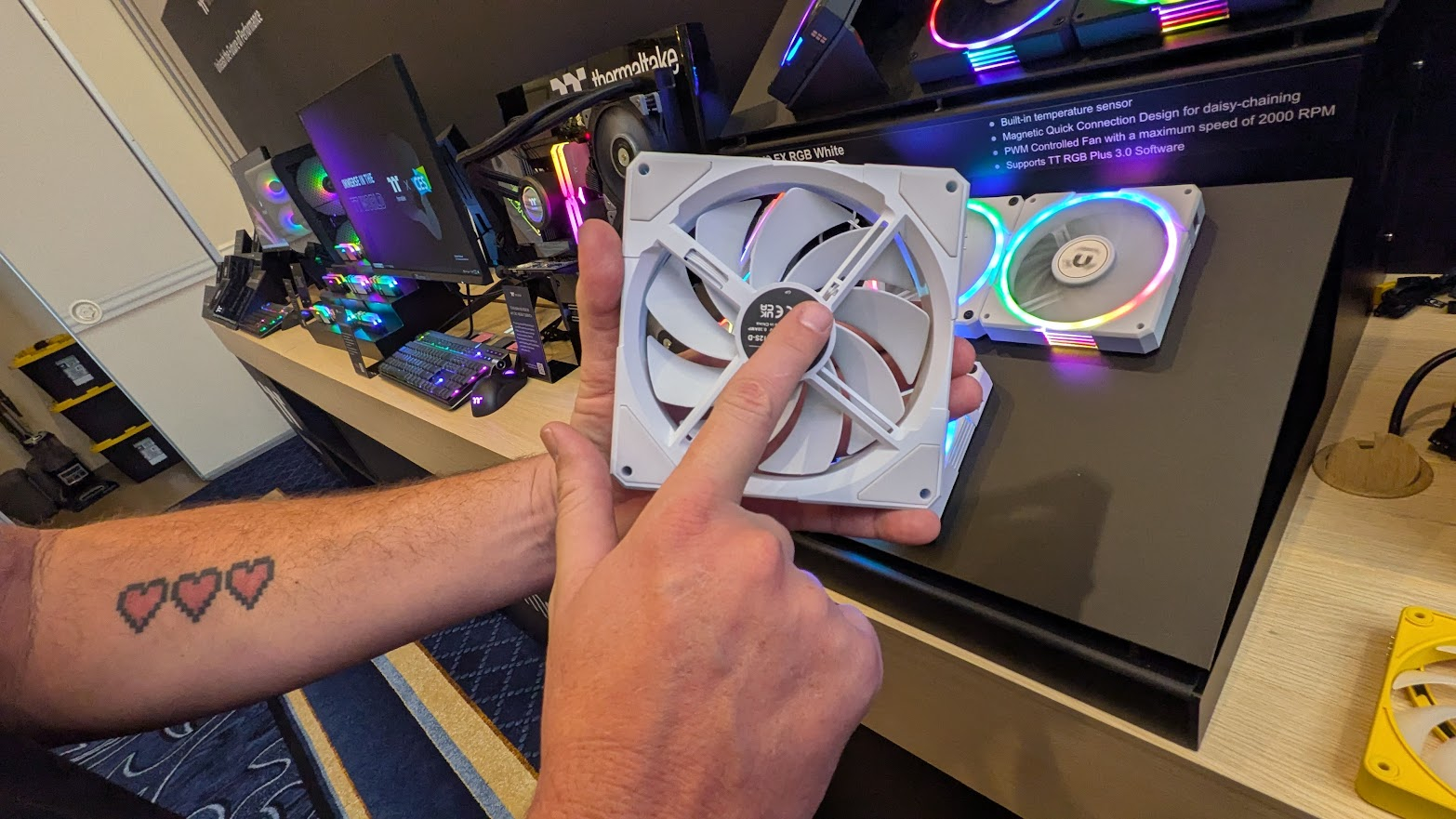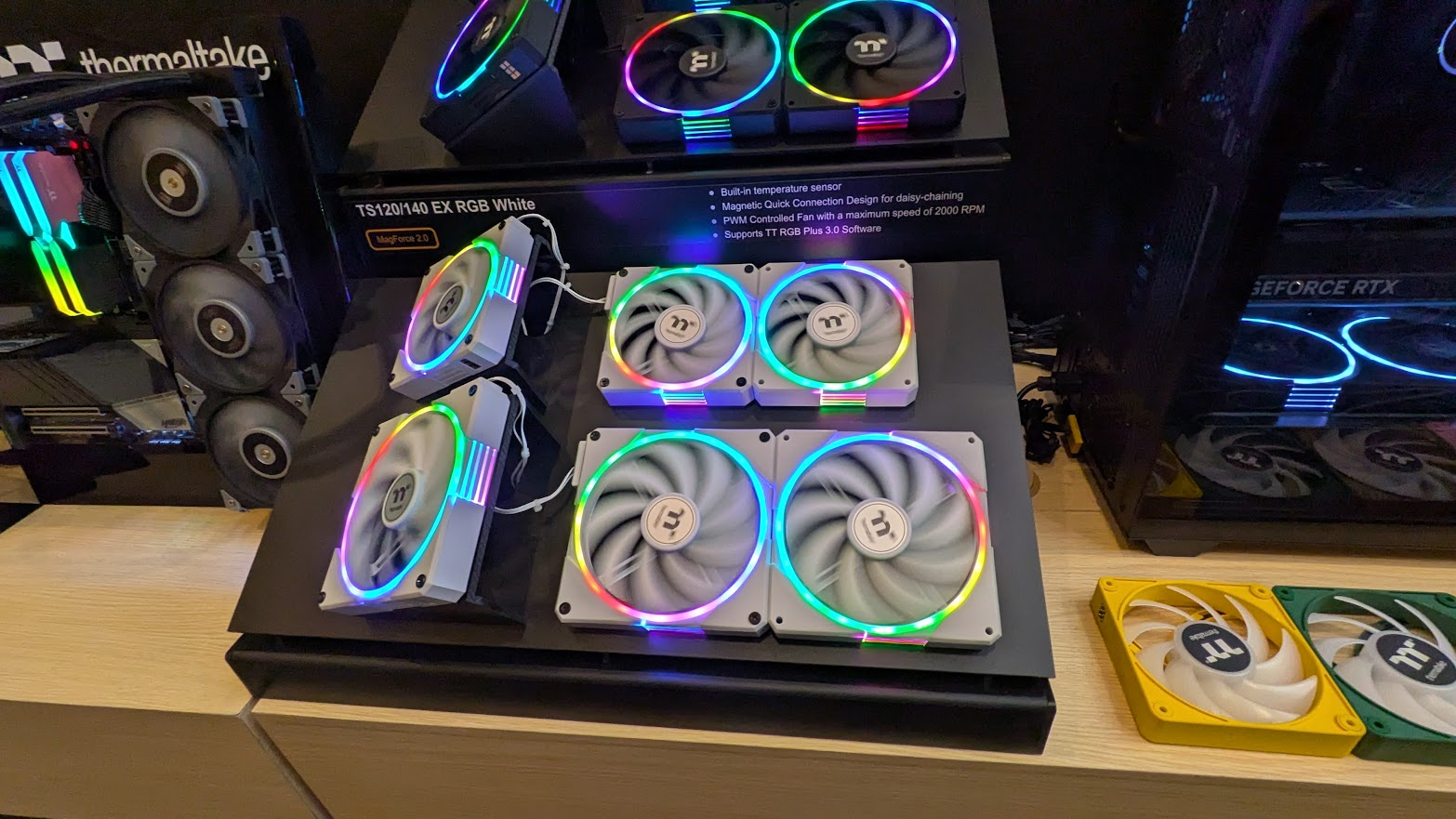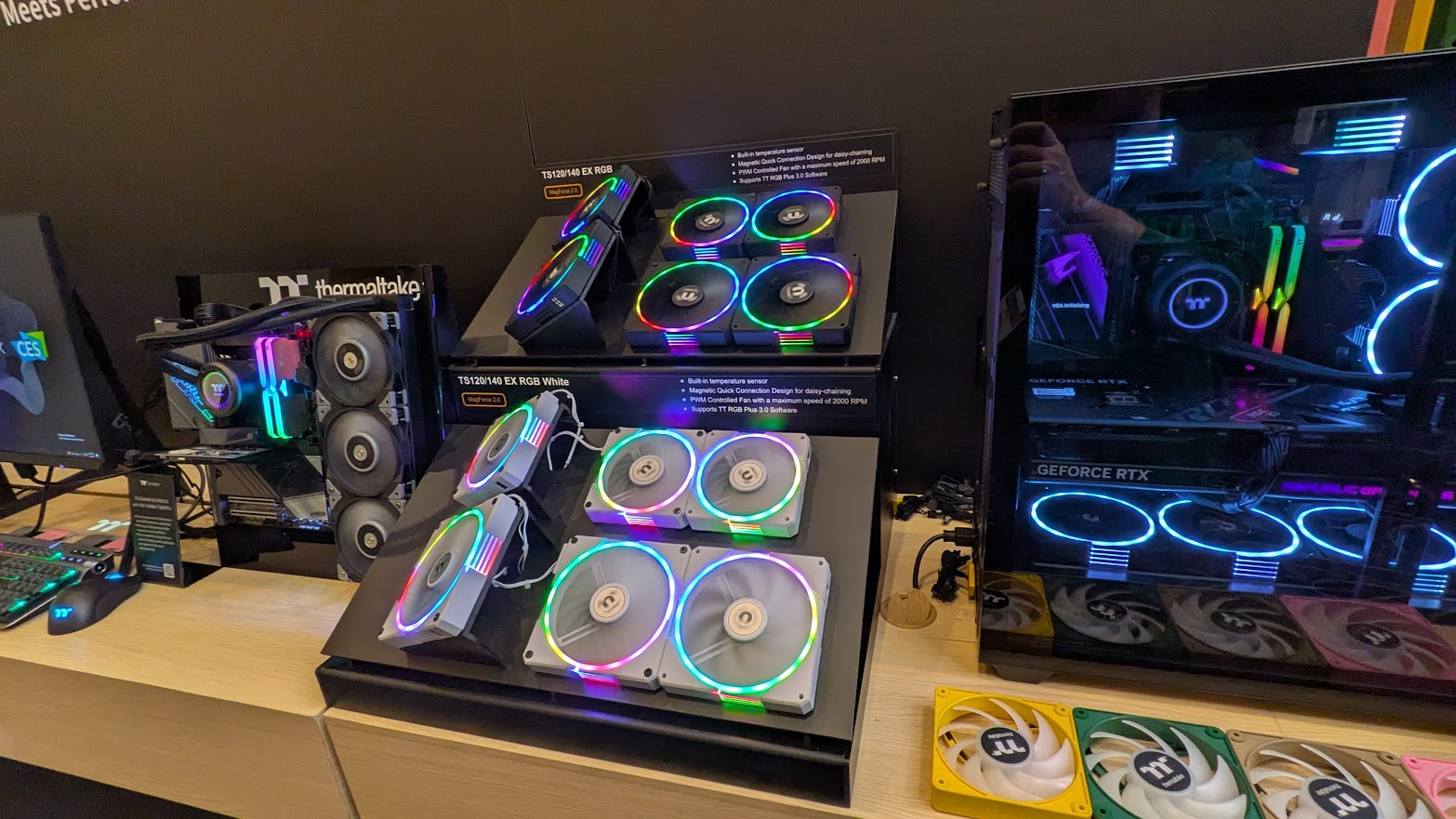
Whether they are controlled by your motherboard or by a dedicated controller, your PC's case fans cycle up and down based on how hot the control software thinks your computer is. The problem: most computers get temperature and usage readouts for the CPU and GPU, but not for the exact area where your case fans live. You might have case fans that are very far away from your hottest components and perhaps they could be spinning less (or more) based on the temperature on the top of your case or the front or the bottom.
Thermaltake's new TS120 and TS140 case fans are the company's first to have built-in temperature sensors which allow each one to know exactly how hot or cold it is in that section of your case. Then the upcoming TT Plus RGB 3.0 software will allow you to view the temperatures and control the fan curves, presumably (though this hasn't been confirmed) on a fan-by-fan basis.


Due out in Q1 for $89 for a pack of three 120mm fans or $94 for three of the 140mm, the TS120 and TS140 aren't the very first case fans to have built-in temperature sensors. We believe that honor goes to Corsair, whose QX120 fans debuted in 2023. However, Thermaltake's fans will be selling for about $40 less, even at their MSRP and integrate nicely with the brand's rich ecosystem of coolers, cases and peripherals.
The TS120 / TS140 snap together using MagForce 2.0, a magnetic connection that makes them easy to put in rows together. Available in black or white, they have rich ARGB rings around the fan itself, along with stacked sets of RGB lines on each side. Each set of three connects to a dedicated controller. The fans run at a maximum speed of 2,000 rpm.
I had a chance to see the TS120 / TS140 fans at Thermaltake's CES 2025 booth and I was both impressed by their bold looks and their advanced functionality. Being able to set temperatures by-the-fan is a recipe for both cooler temperatures and a quieter system overall.







